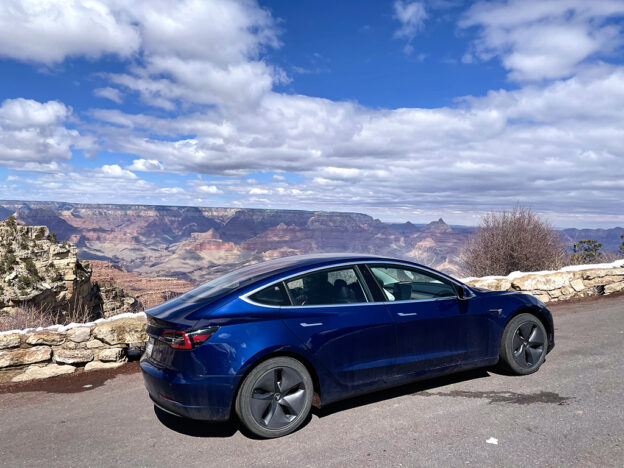March 2021. California-Grand Canyon: There & Back
This spring we drove to the Grand Canyon during our kid’s spring vacation to get outdoors. This post is a ‘road trip primer’ for those considering an EV and demonstrates that electric cars work well for families.
We did the 800+ mile drive (1300 km) in one day to maximize time in the park. We drove our 2018 Model 3 and brought along all of our food, drinks, and clothes for the 8-day trip. Despite warm spring weather in our town the forecast called for snow in the Grand Canyon so we brought along some winter clothes.
To the Grand Canyon
I plotted our route and charging stops using A Better Route Planner. If I was traveling alone I would have skipped the stop in Yermo, but with the kids on board I made 5 stops. ABRP estimated 806 miles and 1 hour 22 minutes charging for the trip to the park. In the end we drove ~813 miles each way and charged for a total of 1 hour 55 minutes on the way up to the Grand Canyon (6800′ ascent), and charged for 1 hour 17 minutes on the way home.
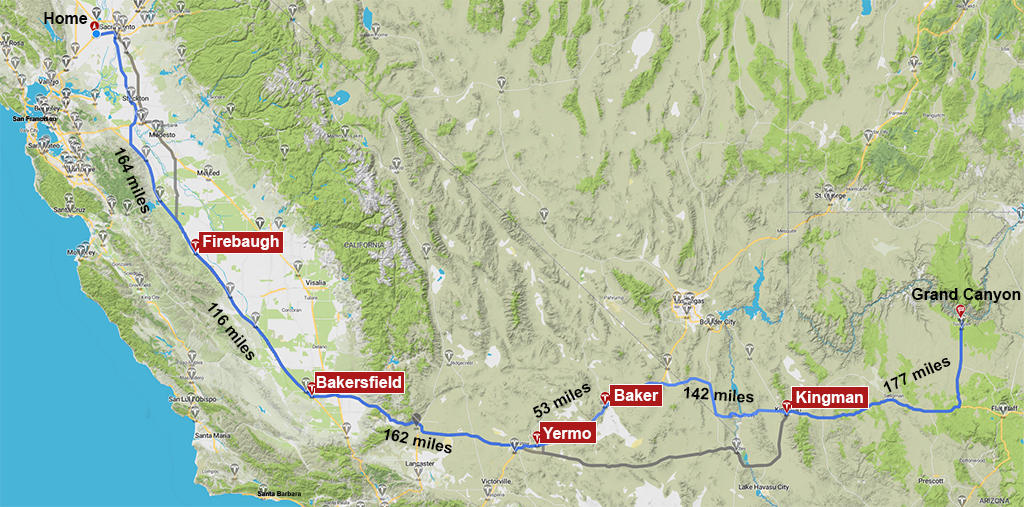
I started the trip with 90% SOC, and charged to 90% in Kingman, AZ for the last leg. At other charging stops my goal was to charge up to the distance of the next leg plus 100 miles. For example, we arrived in Firebaugh with 87 miles in the pack. The next leg to Bakersfield was 116 miles so I charged to 216 miles in Firebaugh (around 75%). I added the extra 100 miles in the pack for unplanned detours. This doesn’t give you the fastest charging time, but it’s my compromise between time and flexibility.
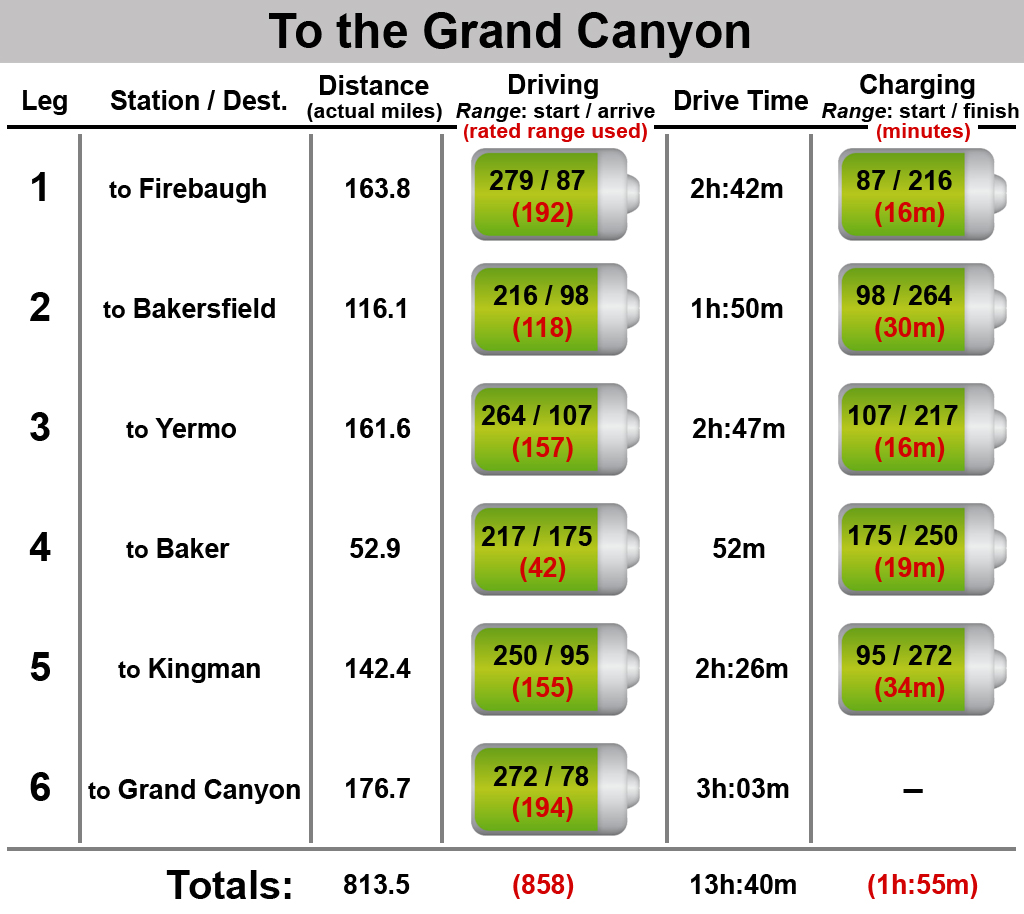
We left home at 4:10AM and paid our fee to enter the Grand Canyon at 8PM. So 16 hours to drive 800+ miles and charge along the way. This was my kids’ first time driving well over 300 miles in a day and they did much better than I expected. We got them in the car at 4AM, they woke up 2 hours later and started playing Uno. They mostly kept themselves occupied and only asked me “Are we there yet?” a couple (dozen) times.
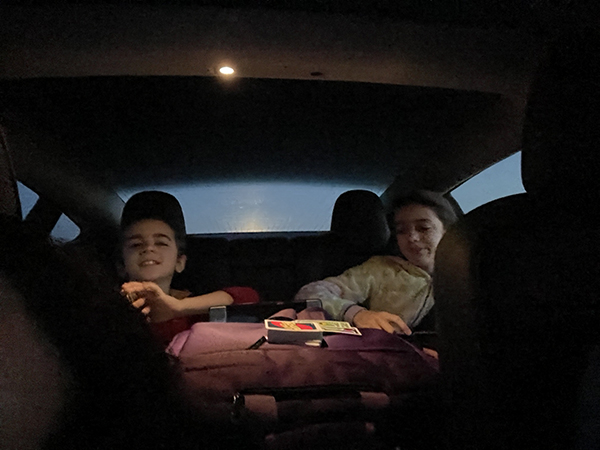
We stopped along the way at the Cesar Chavez National Monument and between Searchlight and Nipton to check out the Joshua trees. We arrived at our lodge in the Grand Canyon with 78 miles of range in the pack.
In the Park
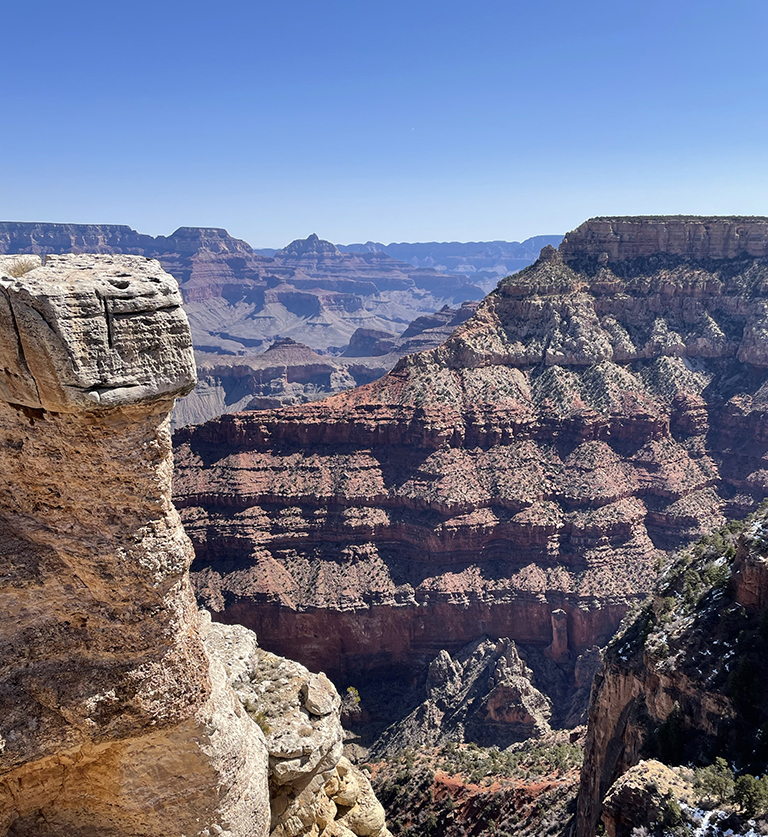
The weather forecast called for snow and we were not disappointed: three inches of snow fell Tuesday and more on Thursday.
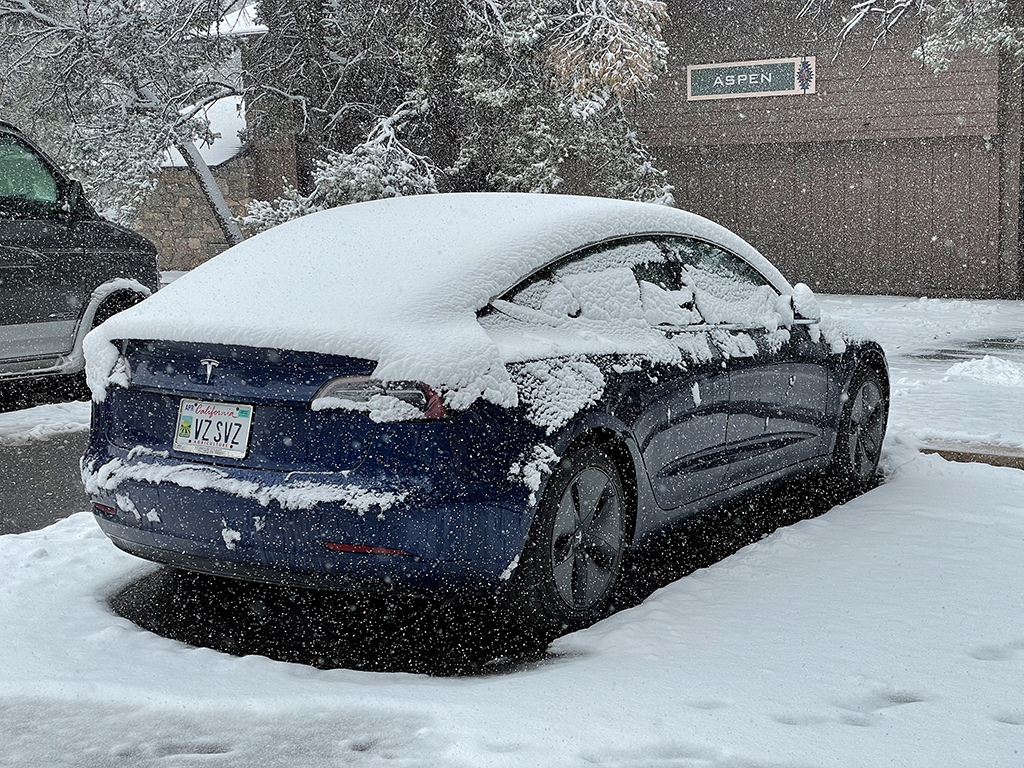
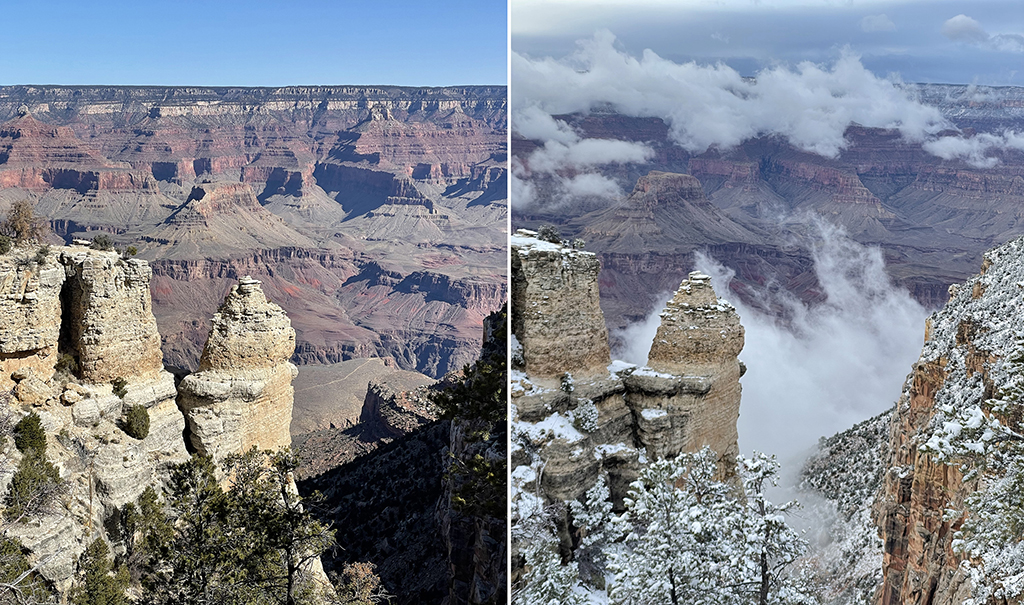

We saw lots of mule deer near the lodge and elk everywhere. There might just be more elk in the park than pigeons in New York City.
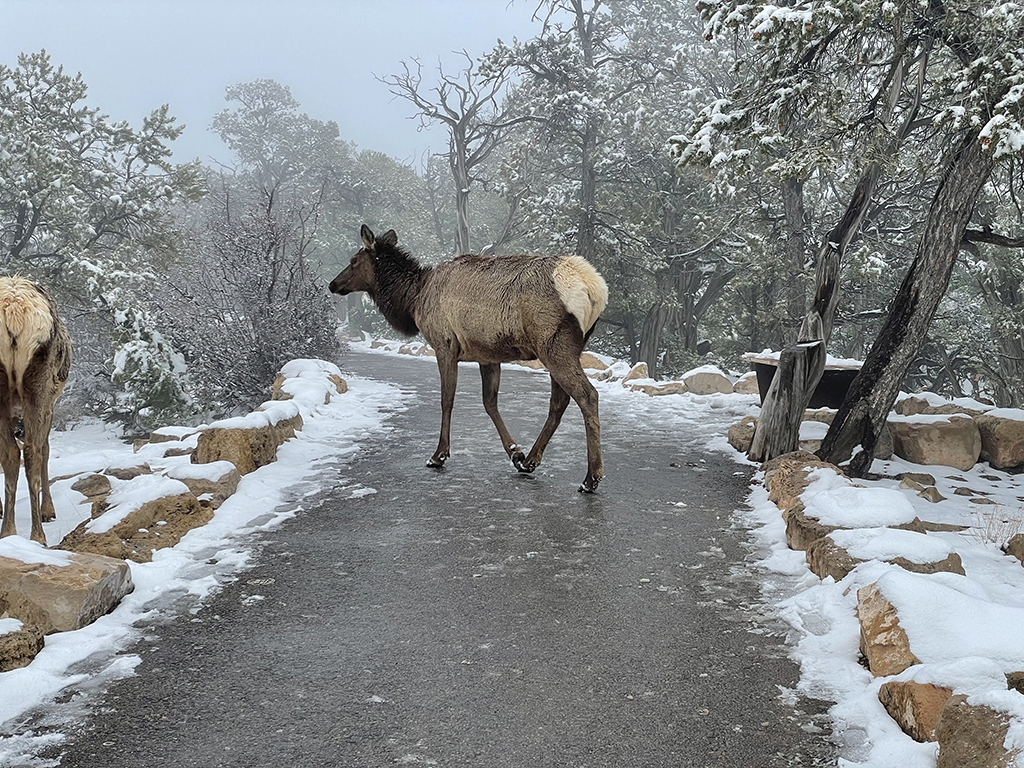
There is a Supercharger and a CCS charger in Tusayan, but Level 2 stations a short walk from our hotel were available so I used them for local driving and to charge up for the ride home (here’s a link to a primer on the different types of charging for EVs – Levels 1, 2, and 3).
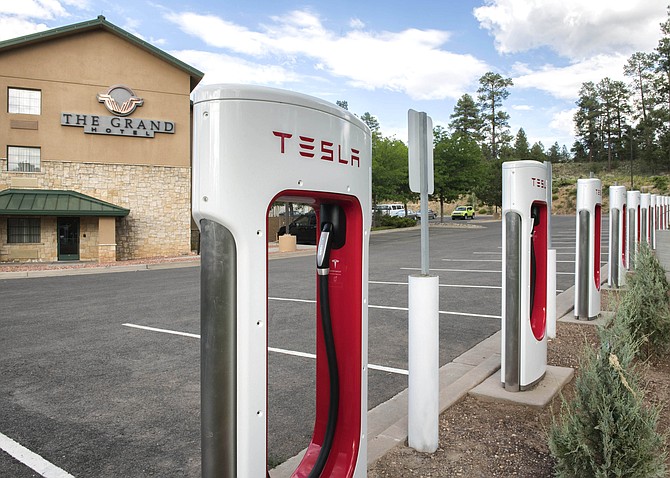
There’s also a Supercharger and a CCS charging station in Williams, AZ about 60 miles from Grand Canyon Village.
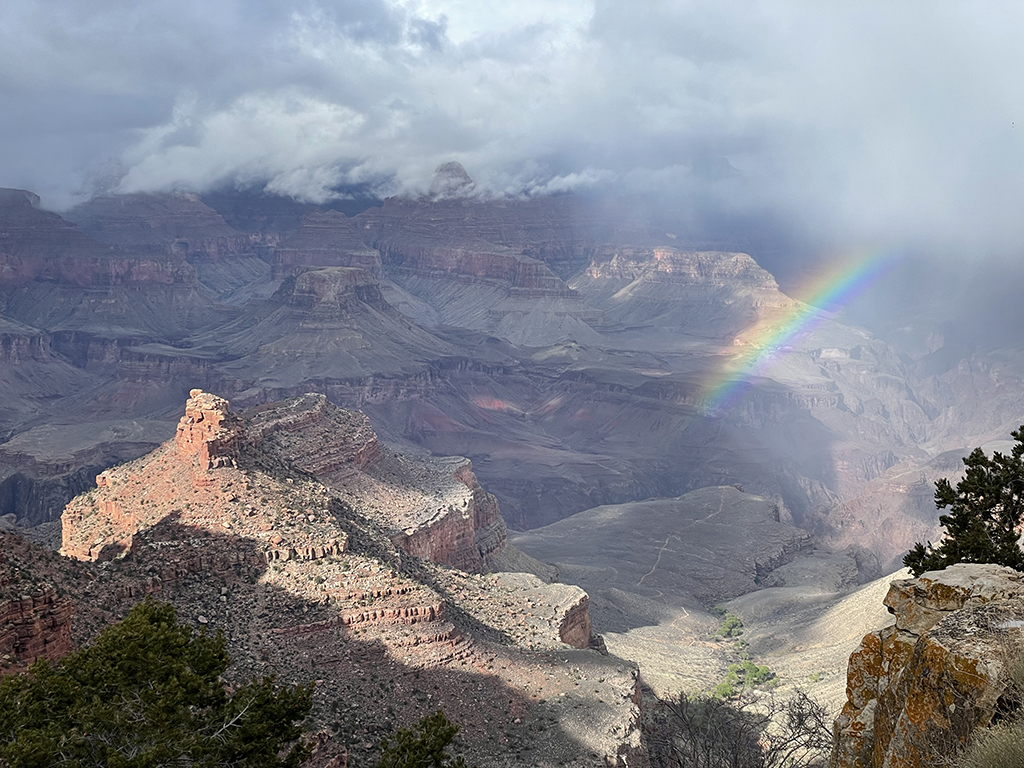
Return Trip
We stopped at the same Superchargers on the way home. We left at 8:30AM and got home at 11:30PM, so 15 hours total driving and charging for the 800+ mile return trip. The return trip had shorter charging time (1h:17m) than on the way up (1h:55m). Partly because we needed less energy descending from 6800′ elevation to near sea level, and also because I was better at herding everyone back into the car after charging sessions on the return trip…. that turns out to be a key part of short charging stops – getting your crew back in the car and ready to go (at least for me).
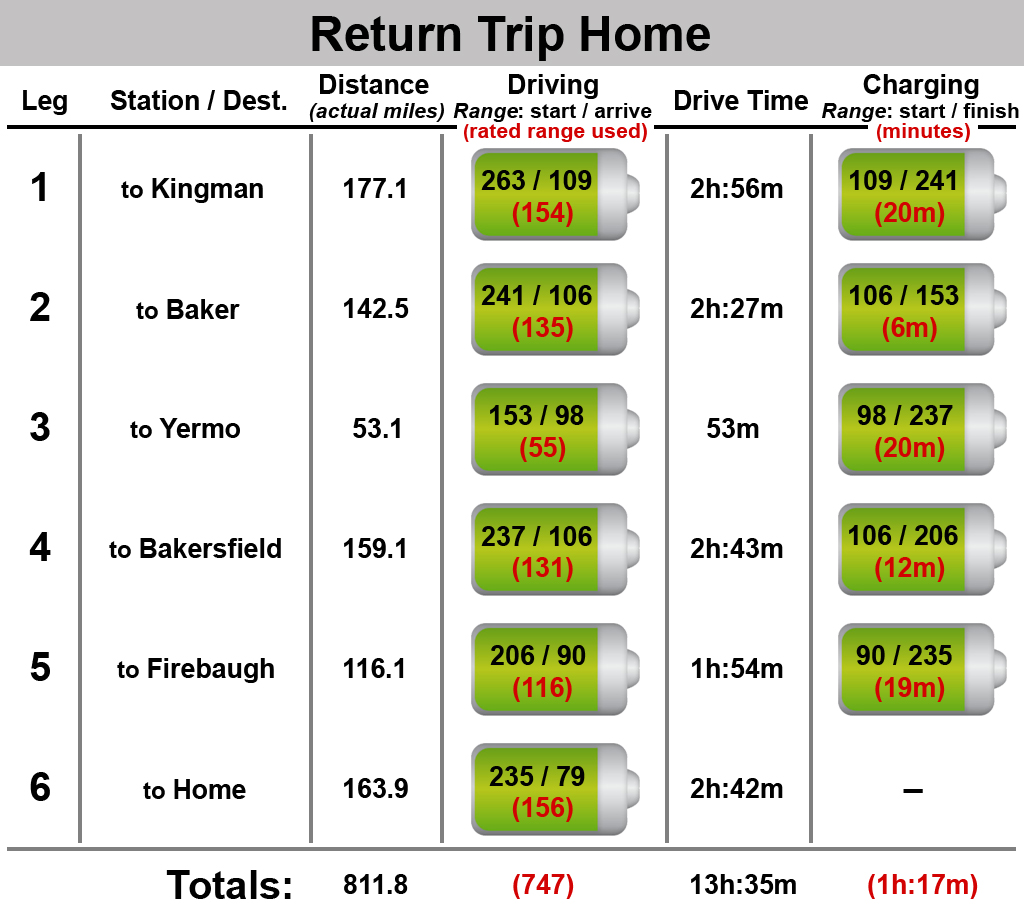
Total highway miles and charging time for the round trip: 1625 miles and about 3 hours Supercharging. My average Supercharging session was just over 19 minutes.

Combined time on the highway to and from the Grand Canyon was about 30 hours, with 10% of that time spent Supercharging. We ate lunch, dinner, or snacks during stops. I used the time to get out of my seat and take a short walk before starting the next leg of the trip. We drove another 90 miles in the park so total mileage for the 8-day trip was 1715 miles.
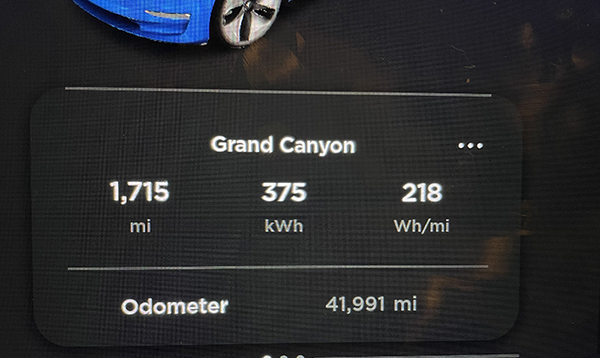
I used Autopilot about 80% of the time on the highway. Lane merging needs to be improved – but I find Autopilot very, very useful for longer drives. It’s reassuring to know that 8 additional ‘eyes’ are watching the road at all times. That made the trip safer and more relaxing.

The Electrify America station next to the Superchargers in Baker has 8 CCS chargers that can deliver 150 kW, and one 50 kW CHAdeMO charger. I saw two Ford MachEs driving on Route 15 near Baker – the RWD MachE with 300 mile range should easily do this trip (other EVs too) using EA’s existing 150 kW chargers. Having a CCS charger in the park will encourage more to make the trip.
Charging Strategy
Tesla’s Supercharger network extends east-west and north-south across the U.S., across southern Canada, and runs south to Mexico City. You can often use Superchargers about 150 miles apart along your route. So you don’t have to fully charge your Tesla at each stop. Instead you can charge the battery enough to give you the range you want to drive to the next station. I add the 100 mile buffer for unplanned detours. Still, charging doesn’t take long. On this trip my average charging session was just over 19 minutes per stop. YCMV. (Note: avoid yoked Supercharger stalls where one is already occupied if possible – 1A and 1B, etc).
Data Collection
I gathered data for this trip by taking snap shots of the odometer each time we arrived at a stop, noting battery pack SOC before and after charging, and timing the length of charging sessions.

Summary
- EVs work for family road trips.
- The Model 3 is very comfortable and has the storage space of a typical mid-size sedan. We packed our clothes, food, drinks for 8 days, and a 700W microwave.
- Tesla’s Supercharging network is dead simple to use. I charged at a 250 kW Supercharger for the first time and noted peak power of 222 kW while adding 145 miles to the pack in 19 minutes (arriving at the station with lower SOC would have increased miles / minute).
- You don’t have to fully recharge the car each time you stop – just add enough to the pack to get to your next stop. If you’re like me add buffer miles for unplanned detours.
- My average charging time for each stop was 19¼ minutes for 1625 miles of highway driving on this trip.
- Spring break week was busy in the Grand Canyon, but Superchargers stalls were not crowded and delivered full power at each stop.
A follow-up post covers emissions from this trip compared to gas-powered cars (spoiler alert: driving electric produced 1/5 the emissions compared to a 25 MPG car).
Interested in EVs? Ask a friend who has an EV, visit a showroom dealer and take one for a test drive.

